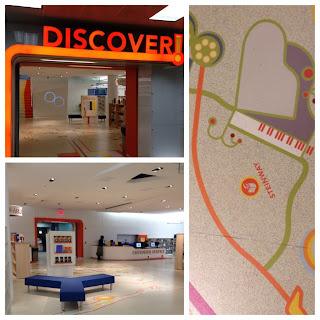I spent some time this weekend reading
an interview with Lella Gandini in the
American Journal of Play. I definitely recommend it - it is for anyone who is an advocate for children's play, not just for advocates of the Reggio Approach.
Gandini touches on a few subjects that I feel I'd love to discuss here, but she talks about one episode in particular that I felt I can relate to, especially at this point in my career. When asked if she could cite an example of a time when a teacher learned as much as a child, she said,
"Here is one I have told before. The teachers decided early one morning to create a surprise for the twelve-month-old children by lining the whole infant room with packing paper and placing some large crayons here and there on the covered floor. They were not sure what would happen, but certainly they expected great reactions and decided they would not interfere or prompt the children about the total change in their environment. They kept the door closed until the whole group of little children arrived. Then they opened the door, though quietly, to be ready to photograph the children's surprise. The children came in...they moved into the room as if absolutely nothing had changed. Some touched or pushed the crayons a bit as they moved on the paper next to them, but without paying much attention. The teachers were ready with their cameras, ready to document the children's surprise. The teachers waited and waited. Nothing happened. They were ready to pt away the cameras, but at a certain point, Francesco started to play with the end of one of the larger pieces of paper, and suddenly he tore it off with energy. The paper, which had originally been tightly rolled up, recoiled back into a long tube. Francesco looked at it and picked up the tube, exploring it with attention and pleasure. Then he looked around and grabbed a crayon that was just close enough and inserted the crayon with care into the tube. He seemed to be surprised that it had disappeared, and he looked toward the end of the tube. No, it was not there. He tried to unroll the paper tube looking for
his crayon, but in doing so, the incline of the tube increased and the crayon rolled out...
The teachers were surprised and delighted by the discoveries of the new game Francesco had invented. In reflecting about the experience, they first noted the skills and thoughtfulness that such a young child like Francesco could have. They also reminded themselves how
everything is so new for young children that the novelty of having a paper covering their entire floor was not something to make them particularly curious or surprised." (Emphasis added.)
This episode touched me as a teacher, as a facilitator, and as a generally reflective person. If I were to walk into my home and have the whole kitchen covered with paper, I would notice it. And some children would notice that. But they are making so many important discoveries for the first time every day that they will pay attention to what is most salient to them. And we cannot expect it to be the same thing that is salient to us. These teachers in this episode had certain expectations, and those expectations were not satisfied. But they were patient, and they did not insist that Francesco put the paper down and draw on it. I know we have all, metaphorically, told Francesco to put the paper down and suggest that he draw on it. I have been challenged by that recently, feeling like something has been missing from what I offer to the children each day. But I have to remember that the children might not approach the work like I expect. And I have to watch even more carefully for those little moments, like Francesco's discovery - it is really easy for those to slip by without noticing.




































